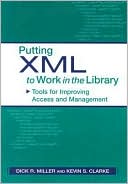Category Books
- Fiction Books & Literature
- Graphic Novels
- Horror
- Mystery & Crime
- Poetry
- Romance Books
- Science Fiction & Fantasy
- Thrillers
- Westerns
- Ages 0-2
- Ages 3-5
- Ages 6-8
- Ages 9-12
- Teens
- Children's Books
- African Americans
- Antiques & Collectibles
- Art, Architecture & Photography
- Bibles & Bible Studies
- Biography
- Business Books
- Christianity
- Computer Books & Technology Books
- Cookbooks, Food & Wine
- Crafts & Hobbies Books
- Education & Teaching
- Engineering
- Entertainment
- Foreign Languages
- Game Books
- Gay & Lesbian
- Health Books, Diet & Fitness Books
- History
- Home & Garden
- Humor Books
- Judaism & Judaica
- Law
- Medical Books
- New Age & Spirituality
- Nonfiction
- Parenting & Family
- Pets
- Philosophy
- Political Books & Current Events Books
- Psychology & Psychotherapy
- Reference
- Religion Books
- Science & Nature
- Self Improvement
- Sex & Relationships
- Social Sciences
- Sports & Adventure
- Study Guides & Test Prep
- Travel
- True Crime
- Weddings
- Women's Studies
Putting XML to Work in the Library: Tools for Improving Access and Management » (1st Edition)

Authors: Dick R. Miller, Kevin S. Clarke
ISBN-13: 9780838908631, ISBN-10: 0838908632
Format: Paperback
Publisher: American Library Association
Date Published: November 2003
Edition: 1st Edition
Author Biography: Dick R. Miller
Book Synopsis
Miller and Clarke, both affiliated with Lane Medical Library, Stanford University Medical Center, outline steps to help libraries make the most of XML. They explain what XML is and why it's important, show how it integrates with MARC and AACR data, and show how to use XML's style sheets and schemas. The book is useful for librarians working in systems, technical services, and cataloging, as well as webmasters. Annotation ©2004 Book News, Inc., Portland, OR
Library Journal
The authors, who are from the Lane Medical Library at the Stanford University Medical Center, argue that XML (eXtensible Markup Language) is a solution to many of the digital access and management challenges facing libraries today. In the first two chapters, they present an overview of XML, explaining why it was created and its important differences with HTML, and then trace the development of XML-related technologies. Since XML deals not with the display of information like HTML but with the use of information itself, an XML project can become quite complex. The narrative descriptions of XML syntax and technologies and how they interrelate are rather intricate and can be a tough read. However, the authors gallantly try to make library-related XML projects understandable, and they excel in placing XML in a library context. In Chapter 3, Miller and Clarke introduce the concept of XML schemas that can be used as blueprints to build workable structures made up of XML building blocks that can stand on their own or interconnect with other schemas. As an example a detailed critique of MARC and AACR is presented in contrast to the flexibility of XML, and the authors describe their own experimental XORBIS project as an XML alternative to MARC and other traditional cataloging practices when dealing with digital information. In Chapter 4 they outline open source tools available for creating and validating XML documents, and they conclude their book with a presentation of some XML standards in the development stage and several other XML solutions used at the Lane Medical Library. As Miller and Clarke are at the forefront for the use of XML in libraries, all catalogers, systems librarians, and other programming-oriented librarians dealing with the challenges of providing access to and managing digital information should read their book. [For a more detailed look at other XML library projects, see Roy Tennant's XML in Libraries.]-Robert Battenfeld, Long Island Univ.-Southampton Coll. Lib., NY Copyright 2004 Reed Business Information.
Table of Contents
| Figures | ||
| Introduction | ||
| 1 | It's Elemental, My Dear Watson | 1 |
| 2 | "The Nice Thing about Standards ..." | 44 |
| 3 | In the Scheme of Things | 91 |
| 4 | XML Tools: What Do You Want to Do Today? | 145 |
| 5 | The Future is Now: Trends and Possibilities | 173 |
| References | 191 | |
| Index | 195 |
Subjects
 Programming
Programming  Network Programming
Network ProgrammingComputer Books & Technology Books
 Programming
Programming  Programming Languages
Programming LanguagesComputer Books & Technology Books
 WWW & Internet
WWW & Internet  Web Programming / Development
Web Programming / DevelopmentEngineering
 Electrical & Electronic Engineering
Electrical & Electronic Engineering  Electronics - Digital
Electronics - DigitalReference
 Library & Information Science
Library & Information Science  Library Administration and Services
Library Administration and ServicesReference
 Library & Information Science
Library & Information Science  Library Information Technology
Library Information TechnologyNonfiction
 Reference
Reference  Library & Information Science
Library & Information Science
